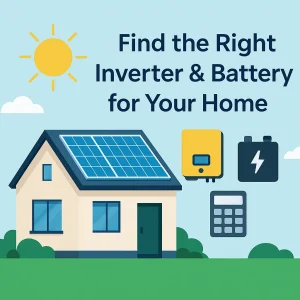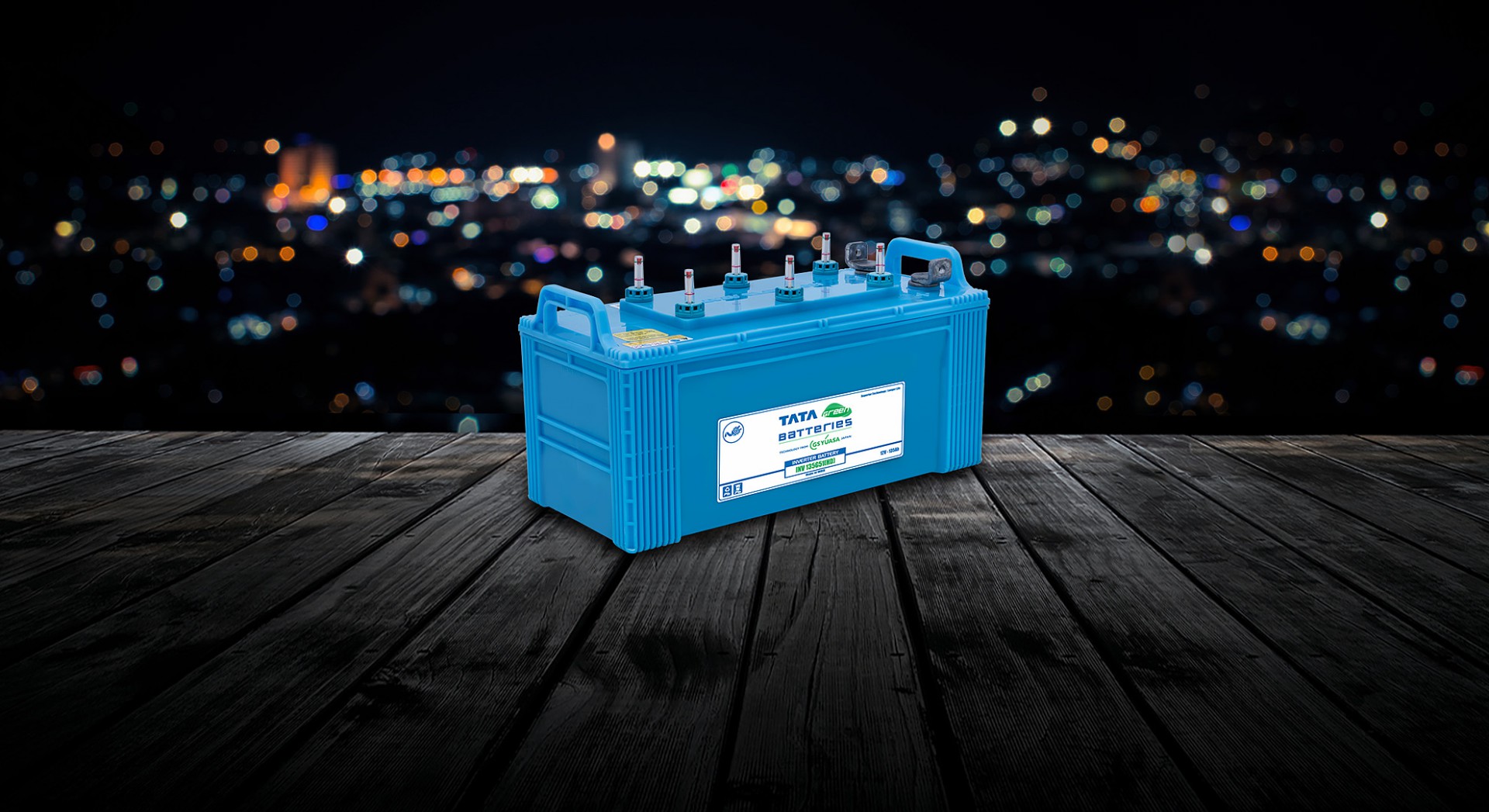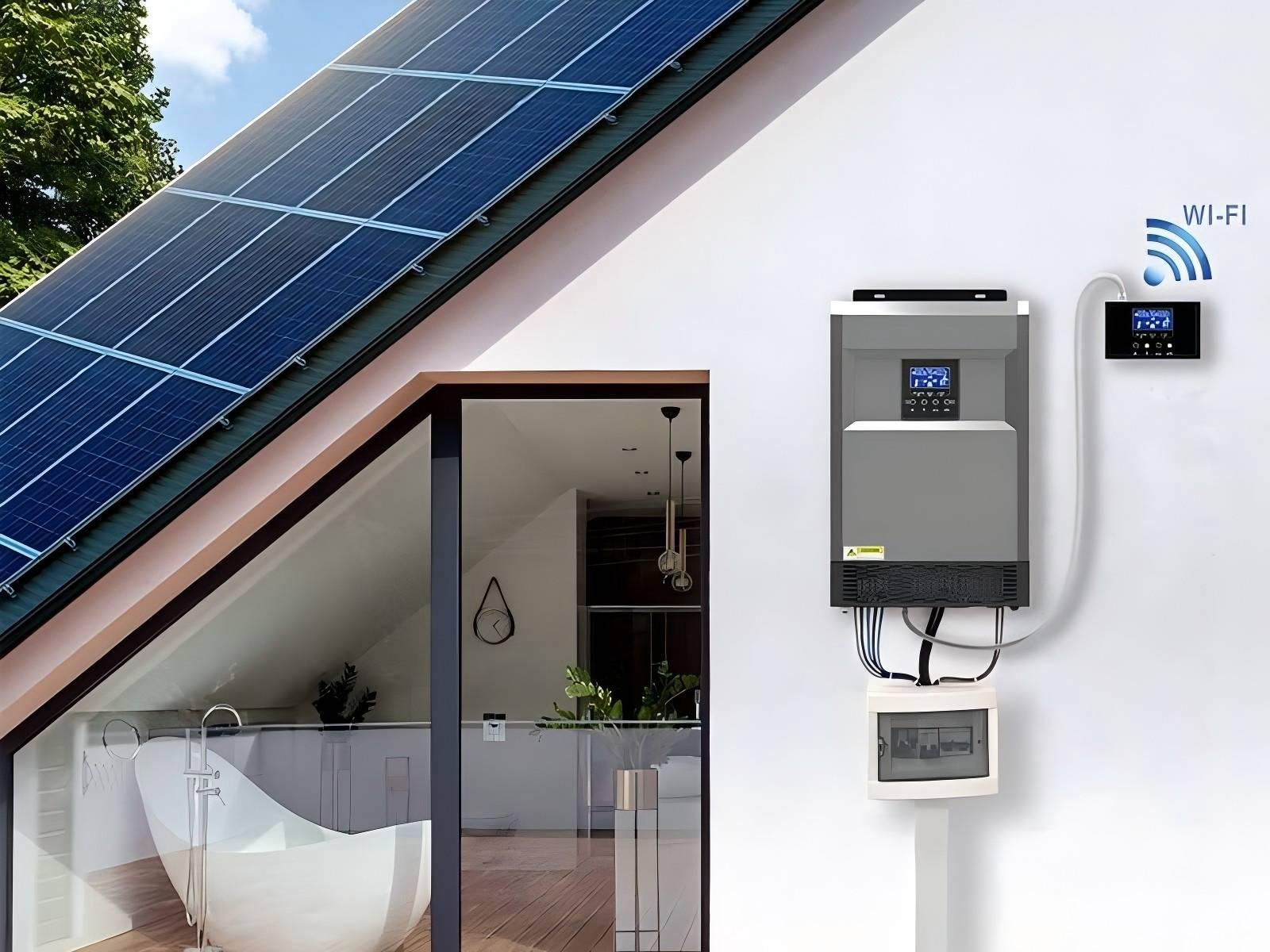Choosing the right inverter and battery for your home is essential. It ensures your home has reliable power during outages.
But how do you make the best choice? Understanding your energy needs is the first step. Every home has different power requirements. Some need more energy for appliances, while others need less. The right inverter and battery can make your home energy efficient and save money.
Consider factors like capacity, type, and cost. These elements influence the performance and lifespan of the inverter and battery. A well-chosen system can provide uninterrupted power and peace of mind. Dive deeper into these considerations to make an informed decision. Find out how to match your home’s needs with the perfect inverter and battery setup.

Credit: luxpowertek.com
Understanding Inverters And Batteries
Choosing the right inverter and battery for your home involves understanding power needs and efficiency. Consider the appliance load and backup duration. Research different types to find the best fit for energy consumption.
Understanding inverters and batteries is crucial if you’re aiming to make your home more energy-efficient. Whether you face frequent power cuts or just want a reliable backup, knowing your options can make all the difference. Before you invest, it’s important to grasp the basics and consider what fits your specific needs.Types Of Inverters
Inverters convert direct current (DC) from your battery into alternating current (AC) for your home appliances. The three main types are pure sine wave, modified sine wave, and square wave inverters. Pure sine wave inverters provide clean energy, similar to what your utility company supplies. They’re perfect for sensitive electronics like laptops and TVs. Although they might be pricier, they’re worth it for the protection they offer. Modified sine wave inverters are less expensive and work well for simple devices. Think of things like fans and lights. However, they might cause issues with more sophisticated equipment. Square wave inverters are the most basic and affordable. They are suitable for very simple appliances but could damage more complex electronics. You might want to skip these if you run gadgets that require steady power.Battery Variants
Choosing the right battery is as important as picking the right inverter. The two most common types are lead-acid and lithium-ion. Lead-acid batteries are budget-friendly and widely available. They’re reliable for short-term backup needs. However, they require regular maintenance and have a shorter lifespan. Lithium-ion batteries are more costly upfront but offer a longer lifespan and require less upkeep. They’re lightweight and better for the environment. If you’re looking for a long-term solution, they might be a smart choice. When selecting a battery, consider the capacity and depth of discharge. Capacity tells you how much power the battery can store. Depth of discharge shows how much of the battery’s capacity you can use without affecting its lifespan. Have you ever had a power outage ruin your evening plans? Understanding the types of inverters and batteries can prevent that from happening again. Consider your needs and budget carefully before making a choice.Assessing Power Needs
Choosing the right inverter and battery starts with understanding your power needs. This means calculating how much energy your home uses and which appliances are crucial. Knowing this helps in selecting the right size and type of inverter and battery. This ensures uninterrupted power during outages.
Estimating Energy Consumption
To estimate energy consumption, check your electricity bills. Look at the average daily usage. This gives a baseline for your power requirements. Consider seasonal changes. Some appliances use more energy in certain months. Keep this in mind to avoid underestimating needs.
Calculate the wattage of your home appliances. Use a wattage calculator or check the appliance labels. Add up the wattage of all appliances you use. This sum helps determine the inverter and battery size.
Identifying Essential Appliances
Identify which appliances are essential during power cuts. Essentials often include refrigerators, lights, and fans. List these appliances and note their power ratings. This helps in choosing the right inverter and battery capacity. Consider the appliances that must run continuously.
Think about non-essential appliances too. These include TVs and computers. Decide if they need power during outages. Prioritize essential appliances to avoid overload. Choosing the right inverter and battery prevents frequent power failures.
Evaluating Inverter Features
Choosing the right inverter for your home is a crucial decision. Evaluating inverter features can help you make an informed choice. The right features ensure you get the most out of your investment, providing reliable power when you need it most.
Efficiency Ratings
Efficiency ratings are key when selecting an inverter. Higher efficiency means less energy wasted, saving you money in the long run. Look for inverters with efficiency ratings above 90%. This ensures more of the electricity is used effectively.
Consider the manufacturer’s reputation. Brands that have been around longer often offer more reliable and efficient products. What experiences have you had with efficiency ratings? Share your thoughts with others to guide their choices.
Waveform Types
Waveform types are another important consideration. The most common types are pure sine wave and modified sine wave. Pure sine wave inverters are typically more expensive but provide cleaner, more stable power.
If you use sensitive equipment like laptops or medical devices, pure sine wave inverters are recommended. Modified sine wave inverters are cost-effective and suitable for less sensitive appliances. Reflect on your household needs—are all your gadgets compatible with a modified sine wave?
Understanding these features can be overwhelming. But breaking them down into efficiency and waveform types simplifies the decision-making process. What priorities do you have for your home setup? Identifying these can help you choose the right inverter features.

Credit: www.tatagreenbattery.com
Battery Capacity And Lifespan
Choosing the right battery for your home inverter can feel like navigating a maze. You want a battery that not only meets your power needs but also lasts long enough to give you peace of mind. Understanding battery capacity and lifespan is crucial in making the right choice. Let’s dive into the details to ensure you’re making an informed decision for your home.
Capacity Measurement
The capacity of a battery is measured in ampere-hours (Ah). This tells you how much energy the battery can store. A higher capacity means the battery can power your home for a longer period during a power outage.
Imagine needing to power essentials like lights, fans, and a fridge during a storm. A battery with a capacity of 150Ah might last longer than a 100Ah battery. Yet, it’s not just about numbers; it’s about matching capacity to your specific needs.
Factors Affecting Lifespan
Several factors influence how long your battery will last. How often you charge and discharge it plays a big role. Frequent use can reduce its lifespan, similar to how a car with high mileage wears out faster.
Temperature also impacts battery life. A battery stored in a hot environment may degrade quicker. This is why considering your local climate is essential when choosing a battery.
Maintenance is another key factor. Regular checks and cleaning can extend a battery’s life. Have you ever considered how a small effort in maintaining your battery could save you money in the long run?
Think of the battery as an investment. Wouldn’t you want it to last as long as possible? By understanding these factors, you can choose a battery that not only meets your needs but also stands the test of time.
Compatibility Considerations
Choosing the right inverter and battery involves checking compatibility with your home’s power needs and existing systems. Ensure the inverter matches battery specifications for efficient energy use. Proper compatibility reduces energy waste and prolongs system lifespan.
Choosing the right inverter and battery for your home can be a daunting task. One of the key factors you need to consider is compatibility. Ensuring that your inverter and battery work seamlessly together is crucial for efficient power supply and longevity of the system. A mismatch can lead to reduced performance and even damage the components. So, how do you ensure compatibility?Inverter-battery Pairing
Pairing the right inverter with the appropriate battery is essential. Just like a good friendship, they need to complement each other’s strengths and weaknesses. You need to ensure that the inverter’s output capacity aligns with the battery’s storage capacity. For example, if you have a high-capacity inverter but a low-capacity battery, the battery might not be able to store all the energy produced, leading to wastage. On the other hand, a small inverter with a large battery might not be able to utilize the battery’s full potential. Have you ever tried to connect a high-power device to a low-capacity outlet? The result isn’t pretty. Similarly, mismatched inverter-battery pairs can lead to inefficiencies. Always check the manufacturer’s recommendations for compatible pairings.Voltage And Amperage Requirements
Voltage and amperage are technical terms that can sound intimidating, but they are vital in ensuring compatibility. Think of voltage as the force pushing electricity through wires, while amperage is the amount of electricity flowing. Both need to align for your inverter and battery to work together effectively. When selecting an inverter, consider its voltage requirements and compare them to your battery’s output. A mismatch in voltage can lead to overheating or underperformance. This is similar to filling a water balloon with a fire hose—too much pressure can cause a burst. Also, pay attention to the amperage. If your inverter requires more amperage than your battery can provide, your inverter won’t run efficiently. This could result in frequent power cuts, leaving you in the dark. Have you ever thought about the importance of these specifications in everyday devices? That phone charger that never quite works right might be a victim of mismatched voltage and amperage. Apply the same caution to your inverter-battery setup. By taking the time to understand these compatibility considerations, you not only safeguard your investment but also ensure a smooth and efficient power supply for your home.Installation And Maintenance
Choosing the right inverter and battery ensures uninterrupted power supply at home. Consider energy needs and budget to find a suitable option. Proper installation and regular maintenance maximize efficiency and lifespan.
Choosing the right inverter and battery for your home is only the first step in ensuring efficient power supply. Installation and maintenance play crucial roles in maximizing your system’s performance and lifespan. Whether you’re considering professional installation or a DIY approach, each option has its benefits and challenges. Routine maintenance, especially for batteries, is essential to keep everything running smoothly.Professional Vs. Diy Installation
Deciding between professional and DIY installation can be a tough call. Professional installation ensures expertise and peace of mind. You get access to skilled technicians who can navigate complex setups and troubleshoot unexpected issues. This might be ideal if you’re not familiar with electrical systems or if your setup is intricate. On the other hand, DIY installation can be rewarding if you’re hands-on and enjoy learning new skills. It allows you to save costs and gain firsthand knowledge of your system’s operation. However, it’s crucial to follow the manufacturer’s guidelines meticulously to avoid mistakes that could lead to inefficiencies or safety hazards. Consider your comfort level with electrical tasks and the complexity of your setup. If you’re unsure, think about how much time and effort you can invest in learning and executing the installation.Routine Battery Maintenance
Battery maintenance is vital for reliability and longevity. Simple tasks can make a significant difference. Regularly check for corrosion on battery terminals; it can hinder performance. Use a mixture of baking soda and water to clean terminals if needed. Monitor the water levels in lead-acid batteries. Low water levels can damage the battery, reducing its lifespan. If levels are low, add distilled water to maintain optimal performance. Consider using a battery monitoring system. It provides real-time data on battery health, helping you detect issues early. This proactive approach can prevent unexpected failures and extend your battery’s life. Have you ever had a power outage in the middle of an important task? Routine maintenance can help you avoid such scenarios, ensuring your power system is ready when you need it most.Cost And Budgeting
Choosing the right inverter and battery for your home requires careful budgeting. Understanding costs helps you make an informed decision. Budgeting involves considering both initial investment and future savings.
Initial Investment Costs
Start by evaluating the upfront costs of inverters and batteries. Compare different brands and models. Prices vary based on capacity and technology. Higher capacity systems usually cost more. Investing in reliable brands can prevent frequent replacements. Research warranties offered by manufacturers. A good warranty can be valuable.
Long-term Savings
Consider how much you save on energy bills over time. A good inverter system reduces electricity costs. Efficient systems provide uninterrupted power supply. This means less reliance on grid electricity. Calculate potential savings over several years. Choose systems with energy-efficient features. This minimizes electricity usage and maximizes savings.
Expert Recommendations
Choosing the right inverter and battery for your home requires expert advice. Consider power needs, budget, and reliable brands. Efficient energy solutions ensure uninterrupted power during outages.
Choosing the right inverter and battery for your home is crucial for ensuring a reliable power supply. Expert recommendations can guide you in making informed decisions. These insights are based on years of experience in the field, focusing on practical solutions and user experiences. Discover how selecting the right combination not only enhances efficiency but also brings peace of mind.Top Brands In The Market
When selecting an inverter and battery, consider well-known brands that have proven reliability. Exide and Luminous are favorites among homeowners due to their innovative technology and durability. Their products often come with extended warranties, providing you assurance for years. Microtek offers a range of options that cater to different power needs. Known for their user-friendly designs, they make installation a breeze. Amaron, with its advanced battery technology, delivers consistent power for longer durations. Choosing a reputed brand ensures you’re investing in quality. It’s not just about the name; it’s about the performance these brands guarantee.Tips For Optimal Usage
Maximizing the efficiency of your inverter and battery starts with understanding your power needs. Assess which appliances are crucial during power outages. This helps in selecting the right capacity for your system. Install your inverter in a well-ventilated space. Heat can reduce efficiency, so keeping the area cool is essential. Regular maintenance checks will prolong the life of your equipment. Clean the terminals and ensure connections are secure. Think about your future needs. Are you planning to add more appliances? Opt for a slightly higher capacity to accommodate these changes. An inverter is a long-term investment, and a little foresight can save you from frequent upgrades. How often have you found yourself in the dark, wishing you had a better backup plan? Making smart choices now can prevent frustration later.
Credit: www.battery-energy-storage-system.com
Frequently Asked Questions
What Size Inverter And Battery Do I Need For My Home?
Calculate total wattage of devices to determine inverter size. Choose battery based on inverter capacity and backup duration needed.
How Do You Match An Inverter With A Battery?
Match an inverter and battery by ensuring compatible voltage and capacity. Check inverter wattage and battery amp-hour rating. Choose batteries that meet inverter requirements for optimal performance. Ensure both have matching specifications for efficient energy use. Regularly monitor and maintain both for reliable operation.
How To Select The Right Inverter For Home?
Determine your power needs by listing essential appliances. Choose an inverter with suitable capacity and battery backup. Opt for trusted brands offering reliable performance. Check compatibility with your home’s electrical system. Consider features like warranty and service support for long-term satisfaction.
How To Identify A Good Inverter Battery?
Check the battery’s capacity, brand reputation, and warranty period. Ensure it has a high charge cycle rating. Opt for a battery with low maintenance requirements and efficient power output. Choose a battery that matches your inverter’s specifications for optimal performance.
Conclusion
Choosing the right inverter and battery is crucial for your home. Consider your power needs and budget carefully. Check the inverter’s capacity and battery type. Look for reliable brands. Compare warranties and customer reviews. Installation matters too. Seek professional help if unsure.
Regular maintenance ensures long-lasting performance. Keep safety in mind. A good choice brings peace and efficiency. Make informed decisions today for a better tomorrow. Your home deserves the best power solutions. Feel confident in your choice and enjoy uninterrupted power supply.
